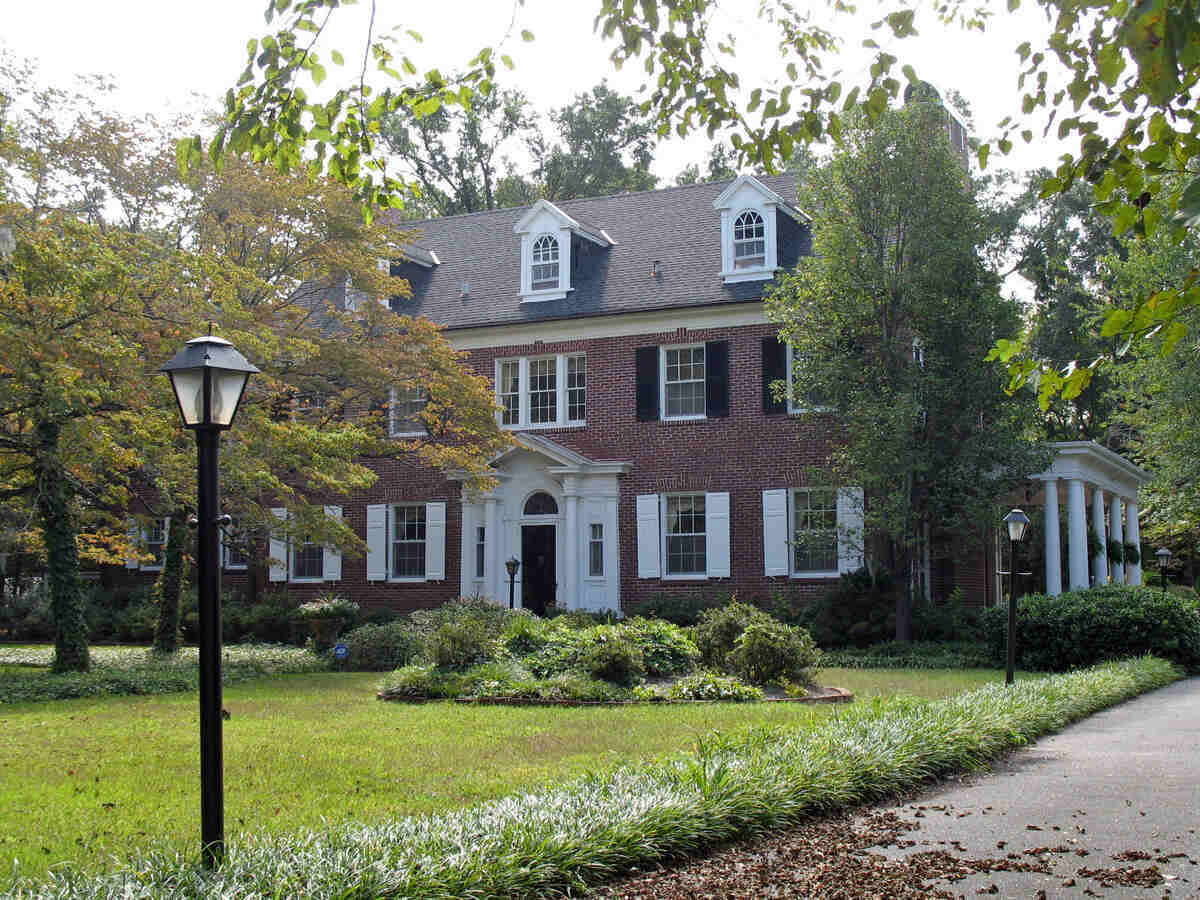
The humid subtropical climate of coastal North Carolina heavily influences the types of grass seed that can prosper here. With plenty of rainfall, the region experiences hot, humid summers and mild winters. Coupled with the sandy soil, these conditions affect how to choose the best grass seed for Wilmington, North Carolina.
Wilmington is presently classified under USDA growing zone 8b, having recently transitioned from 8a. Due to the heat and humidity of this area, warm-season grasses thrive. However, tall fescue, a cool-season grass, is also common in this area.
How to Choose Grass Seed
Wilmington locals can use the chart below to choose the perfect grass seed for their needs. First, determine the type of soil in your yard and the amount of sunlight it receives. Also, consider other factors such as the intended use of the yard (e.g., play area or ornamental) and maintenance needs.
After considering these factors, refer to the chart to select the best grass seed for your North Carolina lawn.
| Grass Type | Soil pH | Shade Tolerant | Foot Traffic Tolerant | Care Level |
| Bahiagrass | 5.5 – 6.5 | Low | Low | Low |
| Bermudagrass | 6.0 – 6.5 | Low | High | High |
| Centipedegrass | 5.0 – 6.0 | Moderate | Low | Low |
| St. Augustine | 6.0 – 7.5 | Moderate | Low | High |
| Tall Fescue | 5.5 – 6.5 | Moderate | Moderate | Moderate |
| Zoysiagrass | 6.0 – 6.5 | Moderate | High | Moderate |
- Soil: Start by testing your soil. The soil test will determine if your soil is acidic or alkaline, aiding your choice of a grass type suited to your yard’s conditions. Wilmington residents can get their soil tested at the New Hanover County Arboretum for $4 during peak season, but it’s free from April 1st to mid-November.
- Sunlight: Determine the amount of sunlight your yard receives. Certain types of grass require full sun, while others can tolerate shade. Consider this if you’re landscaping for shade in your yard.
- Activity: Consider how your lawn will be used. If it’s expected to experience high foot traffic from parties or kids, choose a durable grass type that can withstand the activity. For those with active pups, select the best grass for dogs.
- Care level: Think about the level of maintenance you’re willing to provide. For a low-maintenance lawn, choose a grass type that requires minimal care. If you’re into lawn care, check out our spring lawn care tips for Wilmington for a successful summer lawn.
Best Grass Types for Wilmington
Choosing the right grass seed will ensure a lush and vibrant lawn throughout the summer in Wilmington, providing a beautiful outdoor space for your family. Warm-season grasses such as Bermudagrass, centipedegrass, St. Augustine, and Zoysiagrass are ideal for Wilmington due to their robust growth and heat tolerance.
In addition to these grasses, bahiagrass and cool-season grass like tall fescue can also thrive in Wilmington’s sandy soil, demonstrating resilience to the hot, humid summers experienced in this area. Each has its own characteristics and preferences, so you’ll have to decide which one fits your needs best.
Bahiagrass
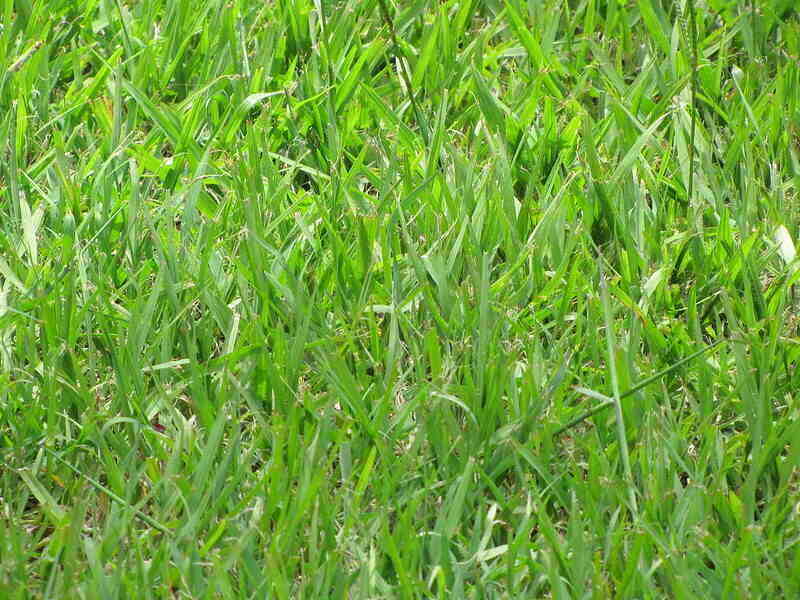
Photo Credit: Forest and Kim Starr / Flickr / CC BY 2.0
This grass can withstand heat and drought exceptionally well, making it ideal for hot summers. Bahiagrass is not shade-tolerant, but it does not require much water or fertilizer and resists pests and diseases.
- Classification: Warm-season grass
- Spreads by: Stolons
- Shade tolerance: Bahiagrass prefers full sun and does not tolerate shade well.
- Drought tolerance: A moderately drought-tolerant grass
- Foot traffic tolerance: Low
- Maintenance needs: This is a low-maintenance grass variety. Low fertility requirements. Expect frequent mowing (every one to two weeks) to remove seed heads.
- Recommended mowing height: It grows slowly and can be mowed to a height of 3 to 4 inches.
- Potential for disease: Good resistance to disease and insect infestations
- Soil pH: 5.5 to 6.5
- Soil type: Performs well in sandy loam soils, but tolerates a wide range of soils, including soils with low fertility.
- Varieties: Pensacola, Argentine, TifQuik, Tifton 9, UF Riata
Grass Seed Options
Pensacola Bahiagrass:
– Scotts Turf Builder Pensacola Bahiagrass (5 lb. bag)
– Hancock Seed Co. Pensacola Bahiagrass Seed (5 lb. bag)
– SeedRanch Pensacola Bahiagrass Seed (10 lb. bag)
Argentine Bahiagrass:
– Scotts Turf Builder Argentine Bahiagrass (10 lb. bag)
– Hancock Seed Co. Argentine Bahiagrass Seed Mix (25 lb. bag)
Bermudagrass
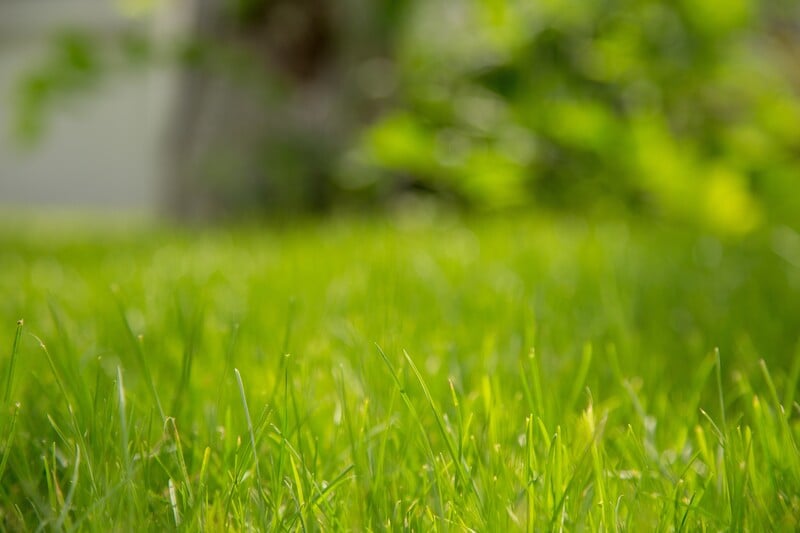
Common and hybrid Bermudagrass, which are well-known for their ability to withstand heat and grow quickly, flourish in Wilmington’s subtropical climate but struggle in areas with a lot of shade.
- Classification: Warm-season grass
- Spreads by: Underground stems (rhizomes) and above-ground stems (stolons)
- Shade tolerance: Bermudagrass does not do well in shade and prefers full sun.
- Drought tolerance: Can survive on rain alone, but will go dormant during long droughts
- Foot traffic tolerance: Bermuda is a good grass for high-traffic yards, thanks to its dense turf.
- Maintenance needs: It needs fertilizer every month during summer. When necessary, water the top 4 to 6 inches of soil.
- Recommended mowing height: Mow the lawn once or twice a week to a height of 1 to 2 inches. The rapid growth will be kept under control and thatch will not build up.
- Potential for disease: Good resistance to disease, although diseases are common; low resistance to insects
- Soil pH: 6-6.5
- Soil type: Tolerates most soil types
Grass Seed Options:
– Pennington Bermudagrass Bare Spot (5 lb. bag)
– Pennington Smart Seed Bermudagrass Mix (8.75-lb. bag)
– Scotts Turf Builder Bermudagrass (10-lb. bag)
– Hancock Seed Co. Bermudagrass (50-lb. bag)
Centipedegrass
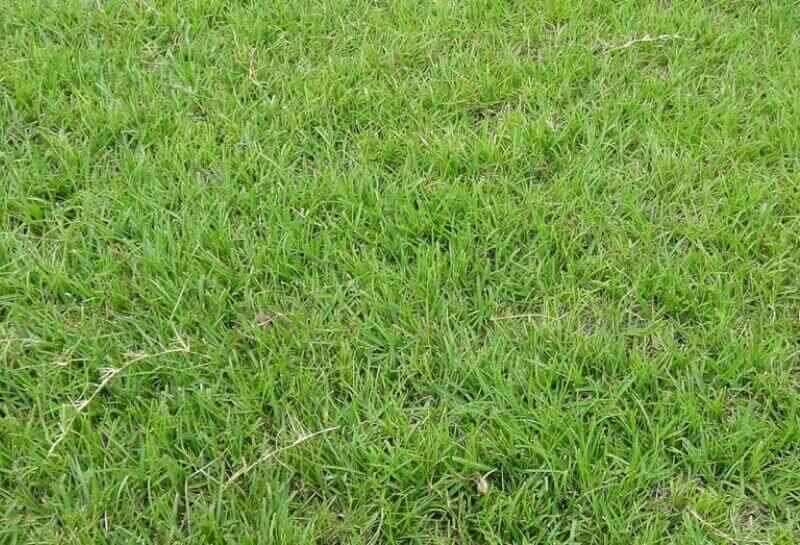
Photo credit: Michael Rivera / Wikimedia Commons / CC BY-SA 4.0
A drought-resistant, low-maintenance option that thrives in partial shade is centipedegrass. Plus, this grass grows well in the sandy soil of Wilmington, making it perfect for yards in the area.
- Classification: Warm-season grass
- Spreads by: Stolons
- Shade tolerance: Although it needs at least six hours of direct sunlight, it’s a grass that grows in the shade.
- Drought tolerance: Moderate; may go dormant during droughts
- Foot traffic tolerance: Low; not a good choice for high-traffic areas
- Maintenance needs: During the growing season, fertilize one to three times. Water as needed or as soon as wilting or discoloration appears. Prone to weeds.
- Recommended mowing height: Because it grows slowly, you can mow it to a height of 1 to 2 inches every one to two weeks.
- Potential for disease: Good resistance to diseases and insects
- Soil pH: 5-6
- Soil type: Acidic, infertile, at least moderately good drainage (very dense, clay soils produce poor results)
Grass Seed Options:
– Gulf Kist Coated Centipedegrass Seeds (1 lb.)
– Scotts EZ Seed Patch and Repair Centipedegrass (3.75 lbs.)
– TifBlair Centipedegrass (5-lb. bag)
– Pennington Centipedegrass and Mulch (5-lb. bag)
St. Augustinegrass
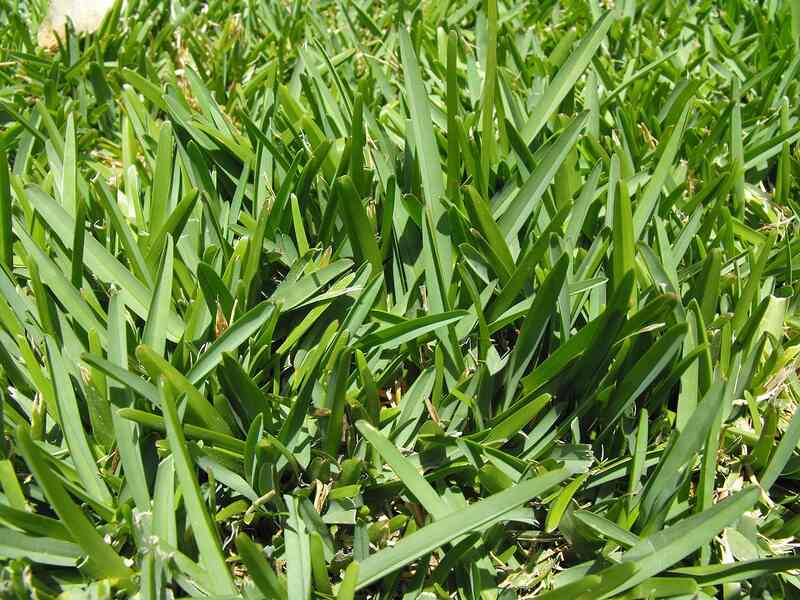
This type of grass doesn’t come in seed form, but you can get it as plugs or sod. St. Augustinegrass thrives in Wilmington’s heat, humidity, and sandy soil. Its dense growth results in a beautiful blue-green lawn that suppresses weeds.
- Classification: Warm-season grass
- Spreads by: Stolons
- Shade tolerance: Compared to other warm-season cultivars, St. Augustine has a higher tolerance for shade.
- Drought tolerance: Can thrive during dry spells, but extra watering may be necessary to keep color.
- Foot traffic tolerance: Not recommended for high-traffic lawns
- Maintenance needs: Fertilize every eight to 10 weeks with one of the best fertilizers for St. Augustinegrass. In Wilmington, your first summer fertilizer application should be done by July 15th and the second one by August 15th. St. Augustinegrass requires only 3/4 to 1 inch of water per week.
- Recommended mowing height: Every week, mow to a height of 3.5 to 4 inches.
- Potential for disease: Moderate to high
- Soil pH: 6-7.5
- Soil type: Tolerates many soil types; prefers moderately fertile and moist (not waterlogged) soils; doesn’t tolerate soil compaction
Grass Plug Options:
– Seed Ranch St Augustine Seville Grass Plugs (2 Trays)
– Seed Ranch St Augustine Floratam Grass Plugs (2 Trays)
Tall Fescue

Photo Credit: Aaron J. Patton, Ph.D. / Turfgrass Extension Specialist at Purdue University
This cool-season grass is a good fit for the area’s climate and is often chosen because it stays green in hot weather, droughts, or heavy foot traffic. However, since tall fescue is a bunch-type grass, it cannot fill in gaps on its own and requires overseeding.
- Classification: Cool-season grass
- Spreads by: Produces short rhizomes but has a bunch-type growth habit
- Shade tolerance: Moderately tolerant of shade
- Drought tolerance: Tolerates drought well but may need extra water in prolonged dry spells
- Foot traffic tolerance: Durable and well suited for moderate-traffic areas
- Maintenance needs: Water 1 to 1 1/4 inches per week and overseed in the fall. It is vulnerable to brown patch. Frequent mowing.
- Recommended mowing height: Set mowing height to 2 inches when grass reaches 3 inches tall
- Potential for disease: Tolerant of most diseases when properly maintained
- Soil pH: 5.5-6.5
- Soil type: Adapted to a wide range of soil conditions, but prefers fertile clay soils with good drainage
Grass Seed Options:
– Triple-Play Tall Fescue Grass Seed Blend (5000 sq ft)
– Eretz Kentucky 31 K31 Tall Fescue Grass Seed (choose your size)
– Pennington The Rebels Tall Fescue Grass Seed Mix (7 lb.)
Zoysiagrass
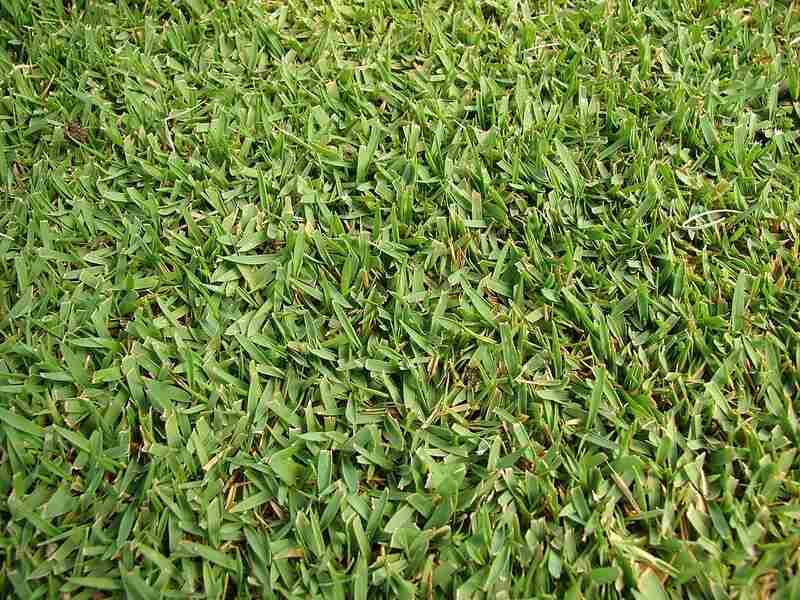
Slow-growing and durable, Zoysiagrass is perfect for yards with plenty of activity. Even in sandy soils, it can tolerate heat and drought and has deep roots that help it absorb nutrients and water well. The dense growth of Zoysiagrass also inhibits weeds.
- Classification: Warm-season grass
- Spreads by: Rhizomes and stolons
- Shade tolerance: Average tolerance to shade, but requires four hours a day in direct sunlight
- Drought tolerance: Highly drought-tolerant, Zoysia turns brown in dry weather but greens up with water.
- Foot traffic tolerance: Because of its density, Zoysia can withstand high foot traffic.
- Maintenance needs: Zoysia needs about 1 inch of water a week and fertilizer once or twice a year. You’ll need to dethatch your lawn every one to two years.
- Recommended mowing height: Mow the lawn once a week or every two weeks, maintaining a height of 1 to 2 inches.
- Potential for disease: Good disease tolerance overall
- Soil pH: 6-6.5
- Soil type: Well draining, some cultivars are more tolerant of a wide range of soils than others
Grass Plug and Seed Options:
– Zoysia Plugs (50 Large Grass Plugs)
– Zoysia Plugs (50 Full & Lush Grass Plugs)
– Zoysia Plugs (100 Plugs)
– Zoysia Emerald Grass Seeds (1/8 lb. of seeds)
– Zenith Zenith Grass Seeds (1/8 lb. of seeds)
When to Plant Grass Seed in Wilmington
The type of grass you choose will determine the best time to plant grass seed. Warm-season grasses, like Bermuda and Zoysia, should be planted in the spring, and cool-season grass, like tall fescue, needs to be planted in the fall.
- Warm-season grasses: Plant in late spring to early summer when soil temperatures reach 65-75 degrees Fahrenheit. These grasses thrive in warm weather and begin to grow rapidly as temperatures rise.
- Cool-season grasses: Plant in early fall when soil temperatures are approximately 50-60 degrees Fahrenheit. This allows the grass to establish before winter while still benefiting from the cool, damp conditions.
Cost to Seed a Lawn
How much seeding a lawn costs depends on the size of your yard, grass type, and whether you hire a pro or opt to go DIY. The cost for a pro to seed a lawn is typically between $592 to $1,768 or around $0.09 to $0.19 per square foot.
If you decide to plant grass seed on your own, you’ll pay between $149 to $449 for the seeds and any necessary equipment. Hiring a contractor to seed a large lawn will cost more than doing it yourself, but pros have the equipment and know how to get your lawn planted quickly and effectively. Plus, it can save you the time of doing it yourself.
FAQ
Yes, you can use baking soda or vinegar to test the pH of your soil. Combine a fresh soil sample with water and vinegar at a 1:1 ratio. If the combination fizzes, your soil is alkaline. If there’s no reaction, the soil may be acidic or neutral.
For acidity testing, mix another fresh soil sample with water and baking soda, again at a 1:1 ratio. If this mixture fizzes, your soil is acidic. If neither of the tests produces a reaction, your soil is likely neutral.
The best way to control weeds in Wilmington is to maintain a healthy lawn. Regular mowing, proper watering, and fertilization will discourage weed growth. Applying pre-emergent herbicides can prevent weeds from growing, as well.
The germination time for grass seed varies by type, but most grasses will start to grow within 10 to 14 days under ideal conditions.
When to Hire a Pro
To choose the best grass seed for North Carolina without the guesswork, consider hiring a professional. They can accurately assess your soil type, choose the ideal grass seed for your Wilmington, North Carolina, yard, and ensure it’s planted correctly for the best growth. Why wait? Get in touch with a local Wilmington lawn care professional today.
LawnStarter participates in the Amazon Services LLC Associates Program, an affiliate advertising program. LawnStarter earns revenue from products promoted in this article.
Sources:
Main Image Credit: Sanfranman59 / Wikimedia Commons / CC BY-SA 3.0